Aubrey has been a fighter since she was an infant. Diagnosed with acute lymphoblastic leukemia, or ALL, at just a year old, she was one of the few kids who don’t respond to the initial treatment. It’s been a rough and scary road, but five years later, she’s a rambunctious kindergartner with an inspiring zest for life.
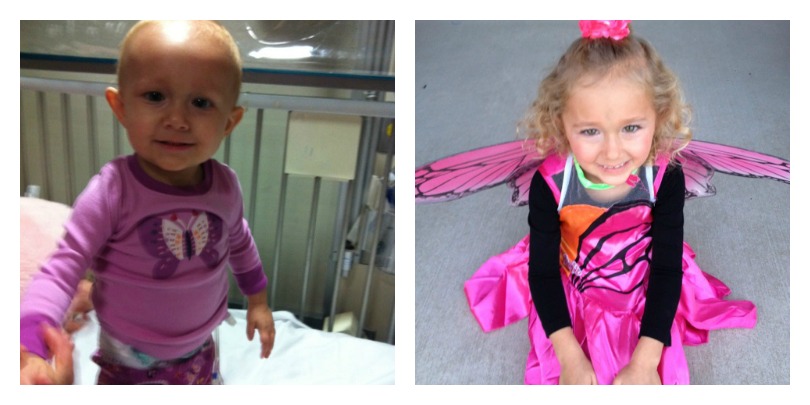
Aubrey was diagnosed with acute lymphoblastic leukemia at just a year old. Now, after fighting through treatment, a transplant and liver disease, she’s 5 years old and enjoying kindergarten.
Five-year-old Aubrey usually loves watching “her videos” — movies about her fight against childhood cancer and the liver disease that nearly took her life.
But something changed last month when she watched one with her mom after coming home from her day at kindergarten.
“She lost it. I mean, bawling, sobbing and she did that for 45 minutes straight. But she wanted to keep watching it,” said her mom, Lacey. Lacey was puzzled and asked her daughter what was wrong.
“She’s like, ‘I don’t remember, but it reminds me.’”
Aubrey was in the fight of her life soon after she was born. At just a year old, she was diagnosed with ALL, the most common type of childhood cancer.The disease was nearly always fatal in the 1950s, but thanks to advances in childhood cancer research, the survival rate has risen to around 90%.
But Aubrey was one of the minority of children with ALL whose cancer doesn’t respond to initial treatment, making a bone marrow transplant one of the only options left.
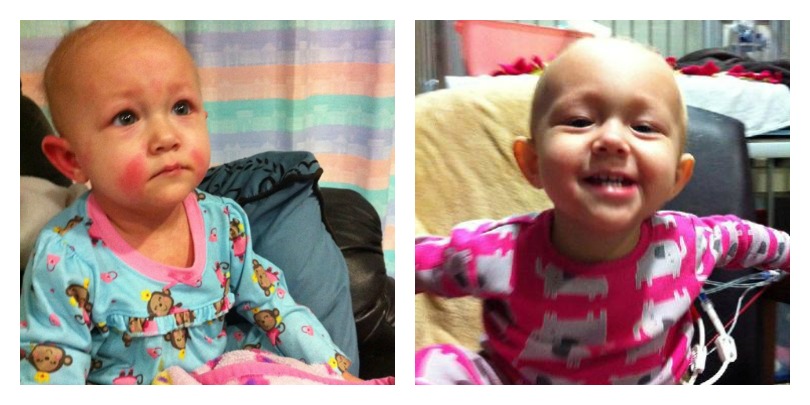
Aubrey spent months in the hospital undergoing intense treatment.
It was a rough journey for the little girl. She had multiple intense rounds of chemo and a terrifying adverse reaction to her morphine pump which left her struggling to breathe. Finally, Aubrey had her transplant on December 3, 2010.
But unfortunately, that transplant wasn’t the end of the hard times for Aubrey.
The intensity of the chemo had damaged Aubrey’s liver and it simply couldn’t flush out the toxins that were building up in her tiny body. Called hepatic veno-occlusive disease, it’s tough to treat.
One day, Lacey’s mother was visiting with Aubrey and was so alarmed at the girl’s condition that she told her daughter to rush to the hospital room.
“I got up there and held her and she was quiet, sleeping, and then all of a sudden she looked up at me and said, ‘Mama.'”
Moments later, Aubrey stopped breathing. Lacey screamed.
Nurses and doctors rushed in, immediately intubated the girl and hooked her up to a ventilator.
Being the fighter that she is, Aubrey held on until she had improved enough to qualify for a trial drug. This medicine had the potential to turn everything around, but it wasn’t guaranteed. Most patients showed improvement within 20 days, but it was a gamble for those who didn’t.
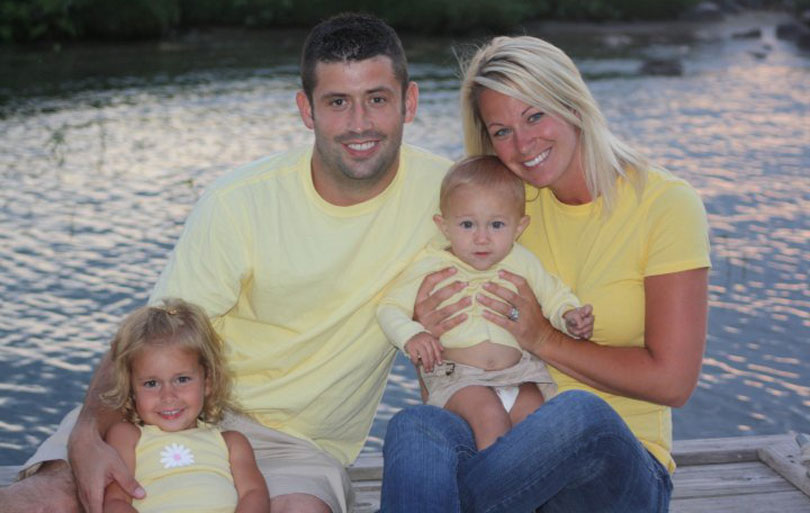
Aubrey with her family.
When Aubrey didn’t respond positively within that period, her parents begged the doctors to continue with the drug.
“They told us, ‘If this works, she’s going to be in the books.’ And we were like, ‘She’s already there,'” Lacey said.
They closely watched Aubrey’s biliruben levels, which indicate whether the liver and kidneys are working properly. Low numbers are good, but Aubrey’s numbers remained high.
Lacey could no longer bear seeing the news written all over the nurses’ faces each day, so she asked them to put the numbers on a piece of paper and post them.
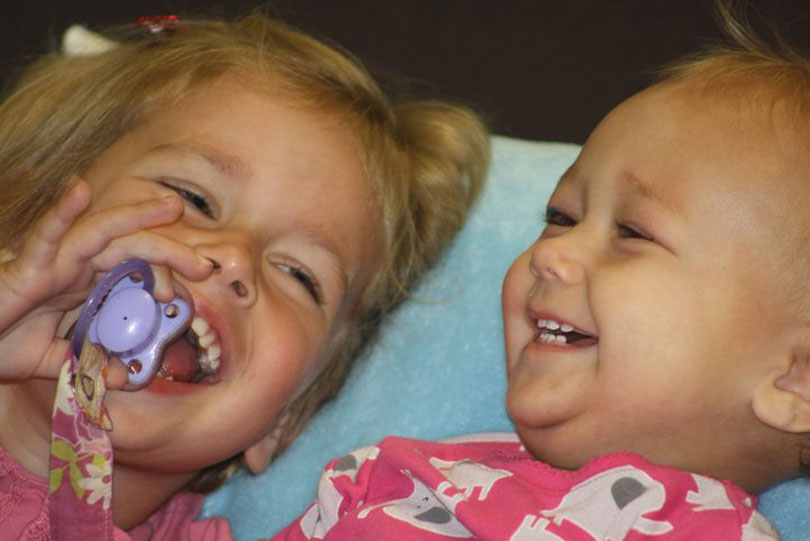
Aubrey enjoys time with her big sister.
Soon after, Aubrey gave her mom the best birthday present ever.
“They woke me up on my birthday with a piece of paper two inches from my face,” Lacey said. “Her numbers had dropped drastically.”
From that moment on, little by little, Aubrey defied the odds. She kept getting better.
“Three days after my birthday, they took her off the ventilator and we were able to hold her for the first time in six weeks.”
Aubrey left the hospital with her family on March 14, 2011.
Though she faces continuing challenges because of her cancer and its treatment, Aubrey is now a smiley 5-year-old with outrageous fashion sense and the same unique, firecracker spirit that got her through so much.
“She likes to take the route that’s untraveled most times. She does not like the road that has footprints on it. Not by any means,” Lacey said.
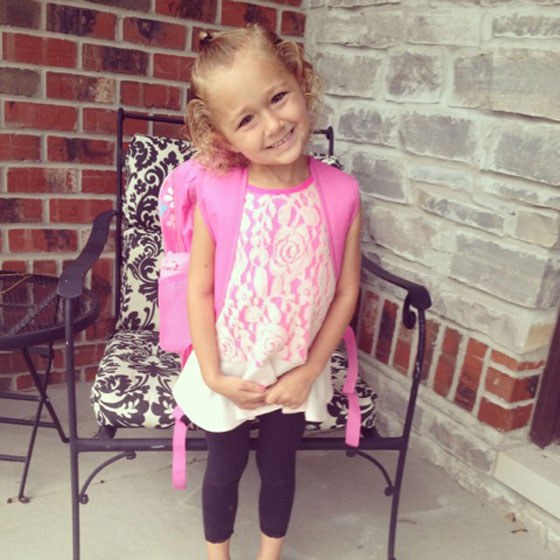
Aubrey is excelling in kindergarten. Her favorite part is, of course, recess and lunch.
Lacey knows how important childhood cancer research is and she’s glad St. Baldrick’s exists to fund it.
“If childhood cancer research weren’t there, all these little 5-year-old survivors like my daughter probably wouldn’t be here,” she said.
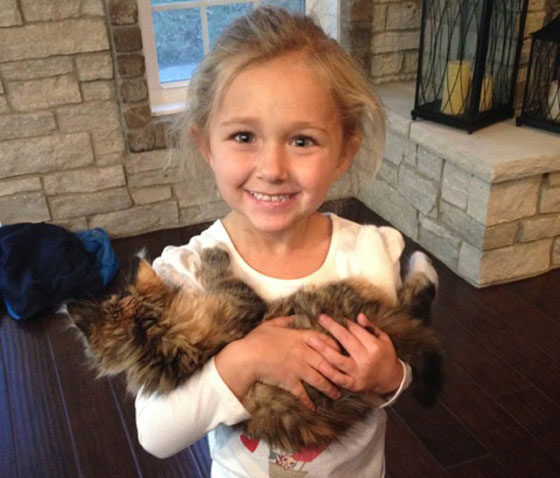
Aubrey visits the doctor often for check-ups on her heart and kidneys. Because of the effects of the harsh treatment needed to save her life, she may need a kidney transplant when she is older.
Aubrey’s transplant doctor is a shavee℠ with St. Baldrick’s and Lacey has just started introducing Aubrey to head-shaving events. Since she’s so young, it’s been a bit challenging to explain the concept to her.
“That’s what I was trying to explain to my daughter this morning,” she said the day before her local St. Baldrick’s event. “That they raise money to make sure that the cancer that she had, if it comes back, it’ll go away and it’ll go away forever.”
Be a part of giving kids like Aubrey a long and healthy life. Invest in childhood cancer research.
Read more on the St. Baldrick’s blog:



 SBF
Tweets »
SBF
Tweets »